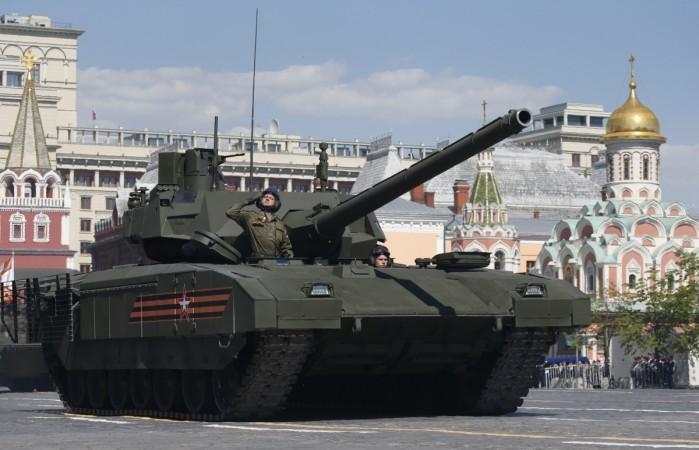
Russia's next generation Armata tank is gearing up to be a vital arsenal in the county's inventory as it announces that the tank can withstand depleted uranium armour-piercing discarded sabot (APDS) shells, reported Russian newspaper Izvestia.
The report noted that this was possible after Russian scientists from KBP Instrument Design Bureau made some new modification to the Afganit active protection system. The active protection system is known to protect the tank from variety of anti-tank rockets and grenades.
"The first APDS core interception tests were conducted this year. The new (active protection) system was able to handle even such difficult targets, despite the fact that intercepting an APDS was previously considered impossible," the newspaper quoted a source in the Defence ministry who is knowledgeable about the tests.
"Special attention was paid to dealing with depleted uranium APDS cores employed by the NATO countries' armoured forces. We're currently working on further upgrading the system and improving its computer algorithms responsible for intercepting targets," the source added.
The T-14 Armata uses Afganit active protection system, which uses combination of active phased antenna array radars and UV detectors to identify and track incoming projectiles. It deploys fragmentation rounds from mini-mortar systems to intercept and destroy incoming targets mid-air, the report noted.
The US used depleted uranium shells during the gulf war to maximise the damage on Soviet-era tanks used by Iraqi's. The effect was devastating, it simply shredded the tanks.
Previously, reports had noted that Russia was testing an optical-electronic system to protect Armata tanks from high precision missiles. The new system is able to detect laser beams or incoming missiles and fires special smoke grenades, making the vehicle invisible to naked eye and infrared beam.

















